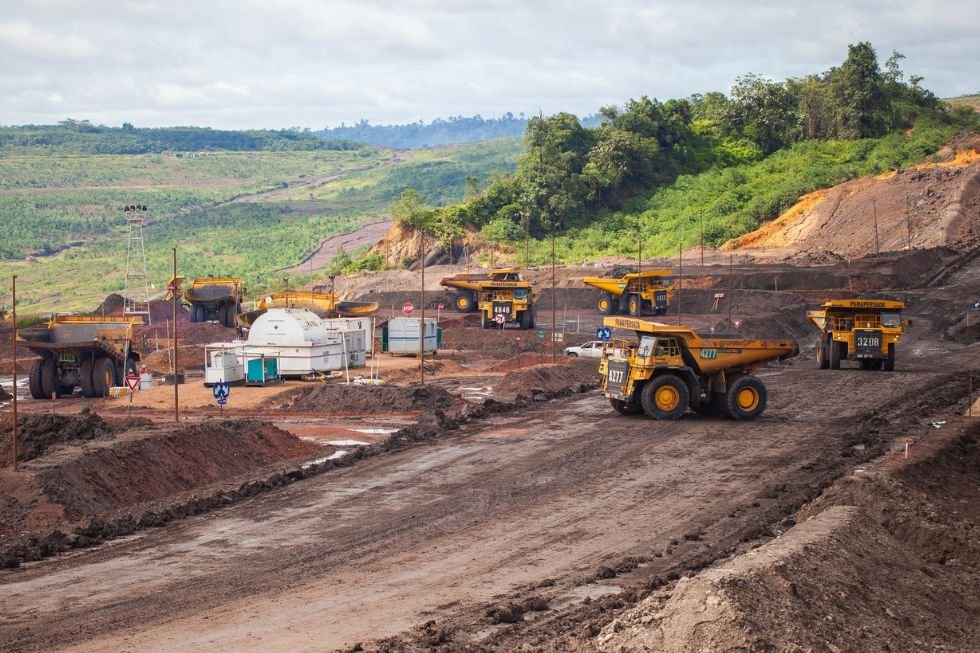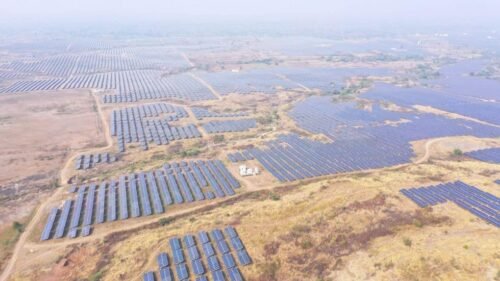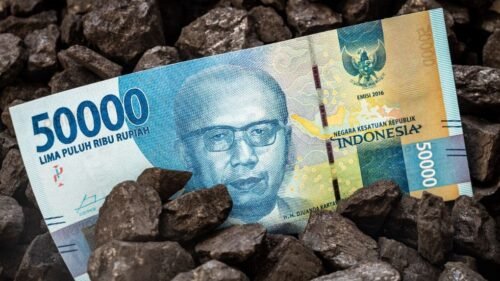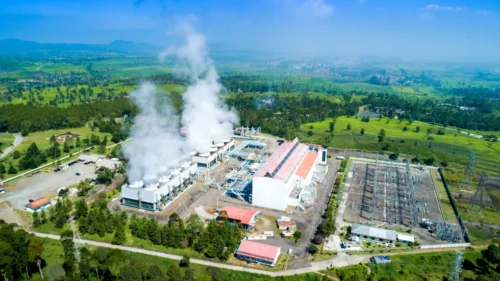When coal executives in Jakarta claim that renewable energy is killing their business, they are highlighting only part of the issue. The collapse in global coal prices — combined with shrinking demand from major buyers like China and India — and rising extraction costs are far larger factors.
At the same time, coal companies failed to use the last five years to prepare for this shift. Their reluctance to invest decisively in solar, hydropower, battery storage or other clean technologies has left them exposed, underperforming and increasingly asking governments for relief rather than reinventing themselves.
Falling exports and prices reveal industry strain
The data makes the severity of their situation clear. In the first four months of 2025, Indonesia shipped only about 150 million tons of thermal coal abroad — roughly 12% less than in the same period in 2024. China and India, Indonesia’s two biggest coal customers, have both cut their imports: China because of increased domestic production and tighter environmental rules, India due to similar motivations plus stronger domestic alternatives.
Meanwhile, in the first half of 2025, Indonesia’s coal production reached about 357.6 million tons — just under half its annual target of 739.7 million tons. Of that output, 238 million tons went to exports, 104.6 million tons to domestic market obligations and 15 million tons remained in inventory.
Simultaneously, coal prices have dropped sharply — by about 30% globally for key benchmarks. In Indonesia, authorities have acknowledged that coal selling prices are low and the drop in revenue is “significant.” But coal executives often shift blame onto renewables. They say solar and wind are undermining coal demand. That claim ignores the timing: renewables were becoming more cost-competitive only gradually, and coal companies had a window years ago to pivot. Rather than shift capital into solar farms, hydro or energy storage, many instead doubled down on coal capacity expansion.
The Institute for Energy Economics and Financial Analysis’s (IEEFA) review of seven major Indonesian coal producers (Adaro, Bayan, Geo Energy, Harum, Indika, Indo Tambangraya Megah [ITMG], PT Bukit Asam [PTBA]) shows that even after record profits in 2022 — $8.4 billion — and strong profits in 2023 — $4.4 billion — several of those companies are planning further expansion of coal production. Bayan Resources and Geo Energy alone are eyeing increases of up to 58 million tonnes of new coal capacity.
The consequence is that coal is growing more expensive to produce, while renewables are becoming cheaper. Mining costs rise with regulation, tougher environmental requirements, land acquisition challenges, labor, overburden removal and increasingly remote locations.
At the same time, solar panels, inverters, balance-of-system costs, and installation costs in Indonesia are dropping. For example, wholesale solar panel prices in recent assessments are in the range of about $0.07 to $0.28 per watt, depending on efficiency, type, volume and supplier. That makes solar increasingly competitive, especially for new generation capacity. When coal companies insist that renewables are undercutting them, the claim misses that renewable energy’s (RE) competitive edge has been building slowly, whereas coal’s cost pressures have escalated sharply.
Profit margins erode as markets shift
Coal’s profitability is slipping. Lower prices, falling export volumes and rising domestic costs squeeze margins. Export revenues have fallen; in March 2025, for example, coal export value dropped about 23% year-on-year, while volumes also slid. Being over-reliant on coal, especially for export, leaves companies vulnerable not only to market cycles but also to shifting policies in importing countries — such as environmental regulation, demand for higher calorific value (CV) coal, carbon pricing and climate goals. China and India are buying less of Indonesia’s medium- and low-CV coal in favor of higher-grade coal from other sources.
The strategic error is clear. Rather than build significant capacity in renewables when profits peaked, many coal firms either postponed or made modest, symbolic moves. Their expansion plans remain heavily coal-focused. Some invest in nickel smelting or aluminum, yet even those downstream moves do not substitute for generative RE capacity.
The result is declining profitability, shrinking market share and a risk that these firms will become increasingly dependent on state interference — higher domestic market obligation (DMO) prices (the minimum price coal-fired power plants pay), regulatory relief, subsidies, perhaps even bailing out stranded coal assets. If these become the primary tools, the public cost will grow, and the sector will remain locked in its decline.
A narrow window for energy transition
Indonesia is at a turning point. Its government has set targets for renewable energy, and there are international commitments, such as the Just Energy Transition Partnership (JETP), that aim to accelerate clean power deployment. To meet these, policy must shift: incentives should favor RE deployment (tax breaks, auction mechanisms, streamlined permits), coal subsidies must be phased out and the regulatory regime should penalize carbon externalities rather than shielding coal producers.
Coal companies must accept that the era of business‐as‐usual is over. The path forward lies in pragmatism: reallocate future capital expenditure to solar, hydro and storage; form partnerships with established RE developers; acquire or build internal RE expertise; develop clear transition roadmaps for investors and stakeholders.
If coal firms do not change their strategy, they risk becoming legacy utilities propped up by protective policy rather than generating profits from competitive markets. Those that act decisively — recognizing that global and domestic trends are against coal — will have a chance to survive, or even to lead in Indonesia’s energy transition. But time is not a luxury. The longer the delay, the harder the pivot, and the greater the cost — for companies, for government and for ordinary Indonesians.
[Kaitlyn Diana edited this piece.]
The views expressed in this article are the author’s own and do not necessarily reflect Fair Observer’s editorial policy.
Support Fair Observer
We rely on your support for our independence, diversity and quality.
For more than 10 years, Fair Observer has been free, fair and independent. No billionaire owns us, no advertisers control us. We are a reader-supported nonprofit. Unlike many other publications, we keep our content free for readers regardless of where they live or whether they can afford to pay. We have no paywalls and no ads.
In the post-truth era of fake news, echo chambers and filter bubbles, we publish a plurality of perspectives from around the world. Anyone can publish with us, but everyone goes through a rigorous editorial process. So, you get fact-checked, well-reasoned content instead of noise.
We publish 3,000+ voices from 90+ countries. We also conduct education and training programs
on subjects ranging from digital media and journalism to writing and critical thinking. This
doesn’t come cheap. Servers, editors, trainers and web developers cost
money.
Please consider supporting us on a regular basis as a recurring donor or a
sustaining member.
Will you support FO’s journalism?
We rely on your support for our independence, diversity and quality.








Comment